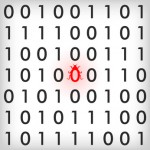 Today’s cars host dozens of ECUs (electronic control units) that exchange tens of thousands of messages and signals on various buses (eg. CAN, MOST, Flexray, Ethernet). On top of that, ECUs provide hundredths of diagnostic services, that allow factories, maintenance personnel and even devices on the car to obtain (and change) various parameters, including vehicle speed, diagnostic trouble codes, and sensor/actuator data. By using diagnostic services, you can literally remote control your car, provided you get passed the security mechanisms, of course.
Today’s cars host dozens of ECUs (electronic control units) that exchange tens of thousands of messages and signals on various buses (eg. CAN, MOST, Flexray, Ethernet). On top of that, ECUs provide hundredths of diagnostic services, that allow factories, maintenance personnel and even devices on the car to obtain (and change) various parameters, including vehicle speed, diagnostic trouble codes, and sensor/actuator data. By using diagnostic services, you can literally remote control your car, provided you get passed the security mechanisms, of course.
Diagnostic commands are exchanged based on the UDS protocol, as specified by ISO 14229-1:2013, via request/response pairs. Requests and responses are coded like this:
Request: SA, DA, SID1, ..., SIDn
Response (OK): SA, DA, SID1|0x40, SID2, ..., SIDn, RESP-PAYLOAD
Response (error): SA, DA, 0x7F, SID1, ERROR-CODE
Every ECU in a car has a unique 1-byte diagnostic address that uniquely identifies it (signified as source address SA and destination address DA, depending on whether a device acts as a sender or receiver) and each diagnostic service of an ECU is addressed by a 1 to n byte long service ID (SID). (Note that in reality, the n-byte “SID” consists of the real SID and a sub-level function ID, but this detail is of no importance for our considerations.)
If, for example, a device with SA = 0x20 wants to read all diagnostic trouble codes from an ECU with DA = 0x60, it would issue this request:
0x20 0x60 0x19 0x0A
where 0x19 0x0A is the two-byte service ID for the “READ DIAGNOSTIC TROUBLE CODES” service.
The positive response of the targeted ECU might look like this:
0x60 0x20 0x59 0x0A 0xFF 0x02 0x40 0x00 0x50 0x02 ...
Notice that the values of SA and DA are swapped; the replying ECU is now the sender and the requesting ECU the receiver. 0x59 is the first byte of the service ID (SID1) or’ed with the “response OK” flag 0x40. The response payload (the requested information, that is, the actual trouble codes) starts with 0xFF 0x02… .
If an ECU cannot fulfill a request, it sends a negative response indicator, followed by an error code that gives details on what went wrong:
0x60 0x20 0x7F 0x019 0x11
Here, 0x7F denotes ‘error’, 0x19 is the first SID byte of the original request (this time without the “response OK” flag) and 0x11 is the error code for “SERVICE NOT SUPPORTED”.
There are two error code values that usually require special treatment: If an ECU responds with error code 0x21 it means that it is currently busy and unable to process the request; if it responds with 0x78 it denotes that it is able to process the request but needs more time to complete it.
This description of the UDS protocol is of course an oversimplification, but it is enough for our bug-hunting purposes. Attached is an extract of an application that incorrectly processes the response to a diagnostic service request. Can you diagnose the problem?